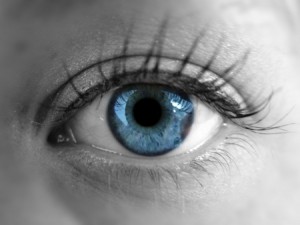 Floaters are anything (specks, dark spots) which move to and fro with your eye movement. Floaters are located within the vitreous, the gel-like substance filling the eye, and cast shadows on to your retina.
Floaters are anything (specks, dark spots) which move to and fro with your eye movement. Floaters are located within the vitreous, the gel-like substance filling the eye, and cast shadows on to your retina.
Because the opacities are located in the movable gel, the shadows, too, move to and fro.
Floaters are common, but can a sign of a potentially blinding condition. All new floaters should be examined by your eye doctor to ensure there is no danger to either your retina or eye.
There are many causes of floaters.
Causes of Floaters
Bleeding into the vitreous can cause floaters. Blood and blood clots get caught up in the vitreous. The bleeding may be a sign of a tear in the retina, a complication of diabetes or problems with the vascular system.
On occasion, inflammation inside the eye can cause a significant accumulation of white blood cells to accumulate in the vitreous. These “white” cells can clump together causing floaters.
Asteroid hyalosis is a normal condition whereby calcium “soaps” aggregate in the vitreous. This is a normal condition and may cause symptoms of floaters if the “asteroid bodies” become too numerous. Surprisingly, these white snowflake opacities are usually unnoticed by the patient.
A posterior vitreous detachment occurs when the vitreous proteins denature (liquefy or degenerate) and the vitreous shrinks or pulls away from the surface of the retina. This is a common cause of floaters in patients over 40 and is much less common in younger individuals.
Acute onset of new floaters can be a sign of a retinal tear. A tear in the retina can sometimes cause bleeding into the vitreous, be associated with a PVD or allow cells (debris) from underneath the retina to collect in the vitreous.
A retinal tear can turn into a retinal detachment, a potentially blinding condition. This is biggest reason all new floaters should be examined.
What to do with New Floaters
All new floaters should be examined within 48-72 hours after onset. You can not without examination if your floaters are benign or related to eye disease, including a retinal detachment or retinal tear.
You need a dilated eye exam performed by your eye doctor.
In the absence of retinal disease, retinal tear or retinal detachment, floaters may be left alone.
Very often, the floaters simply disappear or become less noticeable. For those individuals where the floaters are bothersome and decrease vision…you can be helped.